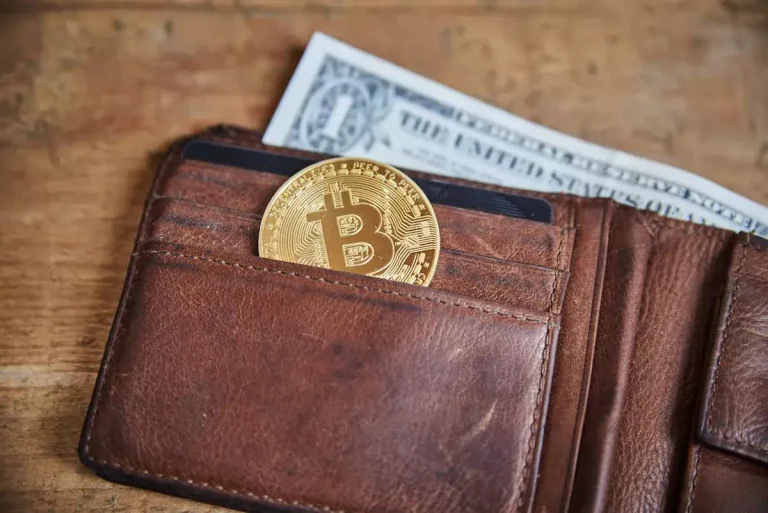Content
The topic pfof meaning of whether payment for order is good or bad for retail traders isn’t an easy question to answer, as well as being politically charged. The SEC oversees broker execution standards and guards against actions that might disadvantage investors, including offering misleading information. When an investor submits an order to buy or sell a stock, their broker passes the order along to a third party to execute the trade and perform the transaction. The practice is perfectly legal if both parties to a PFOF transaction execute the best possible trade for the client.
Continuously update your order-processing workflow
The SEC stepped in and studied the issue in-depth, focusing on options trades. It found that the proliferation of options exchanges and the additional competition for order execution narrowed the spreads. Allowing PFOF to continue, the SEC argued at the time, fosters competition and limits the market power of exchanges. An important part of the NMS was creating the NBBO, which requires all trading venues to display their best available bid and offer prices, and for trades to be executed at https://www.xcritical.com/ these prices or better. This was meant to promote competition among trading venues, which should lead to better prices for investors.

How Third-Parties Profit From Order Flow

A bond’s yield is a function of its market price, which can fluctuate; therefore a bond’s YTW is not “locked in” until the bond is purchased, and your yield at time of purchase may be different from the yield shown here. The “locked in” YTW is not guaranteed; you may receive less than the YTW of the bonds in the Bond Account if you sell any of the bonds before maturity or if the issuer defaults on the bond. Online brokers with zero-commission trading tend to attract a wide array of investors. It takes a level of responsibility off of the retail customer, allowing them to learn as they go and make decisions based on the stock markets performance, not broker fees. Many brokerages discovered a feature called the payment for order flow. And while you might not be paying your broker-dealer to execute your deal, it turns out the brokerage firm is getting paid.
Level 1 vs. Level 2 Market Data
This feature is useful for travelers who need time to arrange finances or confirm other details before completing the purchase while still securing their desired flights. While retail investors may not notice or care about the ramifications of order flow agreements, active traders should be aware of the material effects and indirect costs. When you buy or sell stocks, options, and other securities, the broker-dealer who has your account is responsible for executing the trade and getting you the best price available, known as “the best execution.” All investments involve the risk of loss and the past performance of a security or a financial product does not guarantee future results or returns. The above content provided and paid for by Public and is for general informational purposes only. It is not intended to constitute investment advice or any other kind of professional advice and should not be relied upon as such.
This led to exchanges competing for where options trades should be routed, including giving rebates or incentive payments to the broker or customer for directing their order accordingly. Nevertheless, brokers have a strong incentive to encourage more options trading, especially in a zero-commission trading environment. According to a 2022 study, which is in line with similar reporting and studies, about 65% of the total PFOF received by brokers in the period studied came from options.
- While you benefit from commission-free trading, you might wonder whether it was the best execution, as XYZ Brokerage has a financial incentive to route orders to Alpha Market Makers.
- The rise of low- or no-commission trading took off after Robinhood Markets (HOOD), the low-commission online brokerage, began offering such services in 2013.
- Most brokers will pick the market maker that offers you the best price.
- However, that has changed with the advent of commission-free trading.
- In most cases, it’s impossible to buy more than a bare seat or to have detailed information about the airline and its services.
Some retail brokerages that target more informed investors do not engage in PFOF. Founded in 1993, The Motley Fool is a financial services company dedicated to making the world smarter, happier, and richer. Payment for order flow has evolved greatly, to the benefit of the retail stock and option trader—at least, in terms of reduced commissions. But for most of the top retail brokers in the U.S., another revenue source is payment for order flow (PFOF).

At this stage, it’s important for a business to be clear about what they have in stock and when a customer can expect shipment and delivery. Order processing is an essential part of any retail business, and it can be a make-or-break point in terms of operational efficiency, customer satisfaction, and overall success. It’s possible to complete parts or all of this process manually, but many businesses employ automation technology to save on costs and reduce human error. The order to cash process covers all steps from receiving a customer order to payment collection.
Businesses often elect to implement order processing software to save time and resources, reduce errors, and improve both the customer and employee experience. Learning from your mistakes and refining your order processing workflow is necessary to create the e-commerce business of your dreams. These steps can help you better serve your customers and continue building brand loyalty. That’s why so many companies prioritize their workflows for processing orders to ensure everything runs as smoothly as possible. The accuracy and speed at which your company processes orders can make or break customer loyalty and, in turn, affect the potential for repeat business.
Managing these steps effectively ensures that companies minimise delays in cash inflows, reduce manual errors, and improve tracking of payments. A robust O2C cycle also enables businesses to forecast revenue more accurately. In turn, this helps them manage working capital and prepare for seasonal demands. This capability allows the airline to accept card payments directly from customers.
When making a request for order creation or change, sellers can notify the airline of their intent to pay through a settlement platform, either IATA BSP or ARC. Airlines check the seller’s risk profile and agree (or disagree) to these indirect payments. A seller can request an airline to create an order without paying for it immediately. In response, the airline sends a notification about the order creation with payment details and deadlines.
As reports from SEC studies have shown, clients, at least in some cases, may be paying more in the end despite discounted or free trading for many. The SEC rule 606 requires all brokers disclose the presence of order flow agreements to customers and update their data through filing disclosures that specify who they received order flow payments from and how much. Many brokers will “spin” the cost savings and “price improvements” they pass down to their customers as a result of order flow agreements. Broker-dealers like Robinhood, Charles Schwab, and TD Ameritrade traditionally had several sources of revenue. They received fees from their customers in the form of trading commissions, sales commissions on mutual funds and other products, margin account fees, and investment advisory fees.
What appears to be a win/win situation on the surface gets murky when factoring in payment for order flow agreements beneath the surface. Traders should be aware of the potential impacts these pre-arranged deals may have on their trades. Payment for order flow (PFOF) are fees that broker-dealers receive for placing trades with market makers and electronic communication networks, who then execute the trades. Many brokers maintain Dark Pools in which institutional traders can rest hidden orders. These hidden orders are not shown to anyone, but when a retail order comes in on the opposite side of the market, it can execute against a hidden order so long as the execution price would be at or inside the NBBO. By trading with each other directly, both the institutional trader and the retail customer benefit.
Costs for active traders have come down dramatically, to the benefit of investors. For now, retail investors in the United States seem to be benefiting from the current system. One of the stock market myths is that commission free trades are actually free. PFOF is a common practice among options trading and is becoming more common with stock exchange trades. Its a concept that retail investors often arent aware of but many commission-free stock brokers use PFOF.

